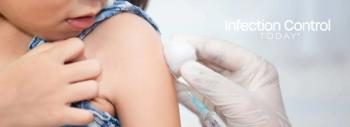
HHS Chief Calls for More Transparent Look at COVID-19 Origin
Health and Human Services Secretary Xavier Becerra: “Phase 2 of the COVID origins study must be launched with terms of reference that are transparent, science-based, and give international experts the independence to fully assess the source of the virus and the early days of the outbreak.”
If officials with the Chinese Communist Party had hoped that their alleged coverup of how COVID-19 started—a possibility that includes that the world- and history-altering deadly pandemic resulted from a lab leak in Wuhan, China—that hope might be dwindling lately. China has been cited by—among other organizations—the
The lab leak theory, once considered so out of bounds that no serious media outlet would touch it (that
That’s the word used yesterday at a virtual World Health Assembly meeting by Health and Human Services Secretary Xavier Becerra, who
Becerra referred to a follow-up to an investigation by the World Health Organization (WHO) that concluded that of 4 possible causes of the COVID-19 pandemic, the lab leak theory was very unlikely.
Tedros Ghebreyesus, the WHO’s director-general, seemed to voice ambivalence about this conclusion. “Although the team [of WHO investigators] has concluded that a laboratory leak is the least likely hypothesis, this requires further investigation, potentially with additional missions involving specialist experts, which I am ready to deploy,” Ghebreyesus said in a statement on March 30.
Helping to fuel the push for a closer look at the lab leak possibility came from a
The letter writers say that they are agnostic as to what caused the pandemic, but the lab leak theory should not be discounted out of hand.
One of the signers—Jesse Bloom, who studies the evolution of viruses at the Fred Hutchinson Cancer Research Center in Seattle—
Becerra said at yesterday’s virtual meeting that “Phase 2 of the COVID origins study must be launched with terms of reference that are transparent, science-based, and give international experts the independence to fully assess the source of the virus and the early days of the outbreak.”
Becerra also said that the investigation needs international assistance—data from all countries—including Taiwan, which China doesn’t recognize. “Global collaboration will be key in tackling the many challenges still before us,” Becerra said, adding that “collaboration with non-state actors must continue, and we must invite Taiwan to be a part of the World Health Assembly as an observer.”
Newsletter
Stay prepared and protected with Infection Control Today's newsletter, delivering essential updates, best practices, and expert insights for infection preventionists.






